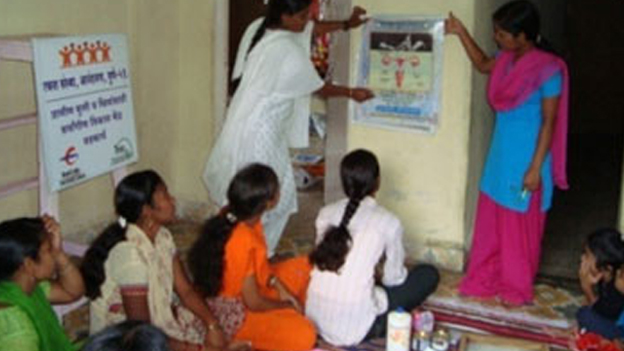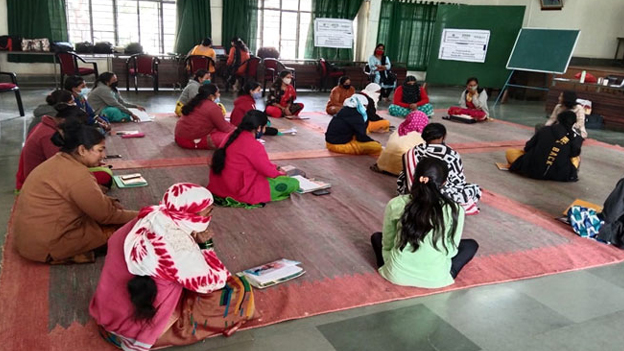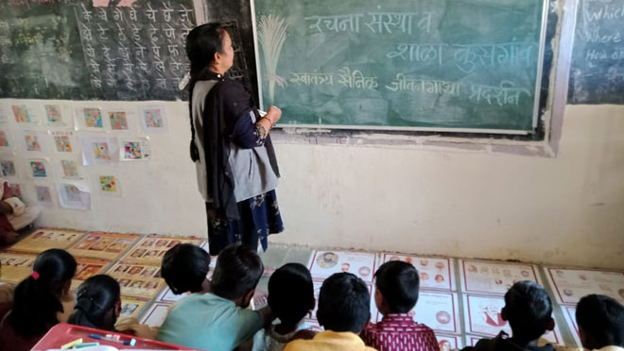
Education
Objectives
1. Student’s Low Educational Attainment Level:
2. Children’s (especially girls) high school dropout percentage.
3. Lack of integrated and holistic development education.
4. Child rights awareness.
5. Absence of women, parents and community representatives participation in the public education process.
6. Public education system strengthening.
Programme
Quality, Joyful and activity-based education
Integrated education for adolescent children.
1. 25,000+ children were reached from this program so far.
2. The program was undertaken from 1994 to 2021 for the adolescent children group (Kishore Dal) focusing on girls’ participation to ensure their participation in the self and community development process. The groups covered school-going boys and girls in the age group of 9 to 15 years. This program reached approximately 1000 to 1200 children annually.
3. The children participated in development activities like sports, essays & drawing competitions, games, yoga exercises, painting, groups discussions, educational trips, project preparation, awareness sessions, get-together programs, science experiments, groups dynamics, skill development, singing, the performance of street plays, focused on the various aspects of education, health, environment, gender equality and child rights.
4. Children took initiative in activities like rallies, field and home visits, poster displays, Demonstrations and campaigns. They communicated with parents, local governance, village representatives, health workers, and teachers to promote the need for appropriate health and educational facilities for children, girls and women, like village-level public facilities, quality education and school facilities, girl’s education, and gender equality.
5. Activities like protection of the environment, prevention of plastic use, plantation of medicinal plants and tree plantation, kitchen garden preparation at school and home level, water preservation, participation in the campaign of malnutrition prevention, personal and community hygiene practices and its adoption were performed by children groups.
Hostel For Rural Girls
- Hostel facility is been provided in the range of 40 to 100 children(focused on girl students) since2003. At present, the facility is being given to girl students only to provide preference for girls’ education. Girls peruse education from 5th standard to 12th standard through this program.
- The girls admitted to the hostel can complete their education up to higher secondary education and be involved in mainstream education. The success ratio of completing education is about 99 %.
- They are deprived of education due to either absence of schools in small isolated villages situated in hilly areas or they are victims of family problems. Poverty and discrimination against girls’ education are common issues. The girls reside in the hostel and attend the Government school.
- The students are regularly enjoying activities like coding class, computer education, cloth stitching and cutting course, sports, physical exercises, yoga exercises, drawing, newspaper reading, group discussions, educational trips, project preparation, books and toys library, get-together programs, science experiments, health sessions singing est.
- Guidance and counselling are being provided to pursue higher education after completion of school education. After completion of schooling majority of beneficiaries completed various vocational courses and university graduation. The majority of students are earning and becoming independent and supporting their families. Many of them have taken up jobs. All of them lead their lives with self-confidence and dignity.
- The process became a medium to build the capacity of the girls not only on an educational level but the confidence level and participatory spirit of these students increase and they display significant improvement in their scholastic and extracurricular.
Preventive Health Care Education for Children
Health Education for Adolescent Girls
Non formal Education for Dropout Girls
- Non-formal education mobile classes for school dropout girls were conducted in various villages from 1994 to 2008.
- The program focused on Minimum learning level achievement, life skills and vocational skills development.
- Vocational skills development included nursery teacher’s training, tailoring, screen printing, handicraft making, food processing, entrepreneurship development etc.
- 5000 girls have undertaken vocational courses, further education and government examinations which made them confident and aware of their self-development and improve their livelihood opportunities significantly.
Chandoba Shala (Pre Primary Education / Creche)
1. 3200 children received pre-primary education through this program.
2. Chandoba shala operated for children deprived of formal education from 1998 to 2004.
3. The centres were initiated only in those villages where the government Anganwadi /pre-primary education centre was either not operational or was overcrowded.
4. The program process also involved the children’s enrolment and retention in formal school, capacity building of education committees and mother parents to evolve their participation in educational subjects.
5. In 30 villages, active community participation resulted in getting the sanction of the Government pre-primary centres.
Vocational & Entrepreneurship Development Training
• Vocational and entrepreneurship development training and counselling were imparted to 5000 adolescent girls, women and youth to develop appropriate mindset and skills for self-employment and income generation.






